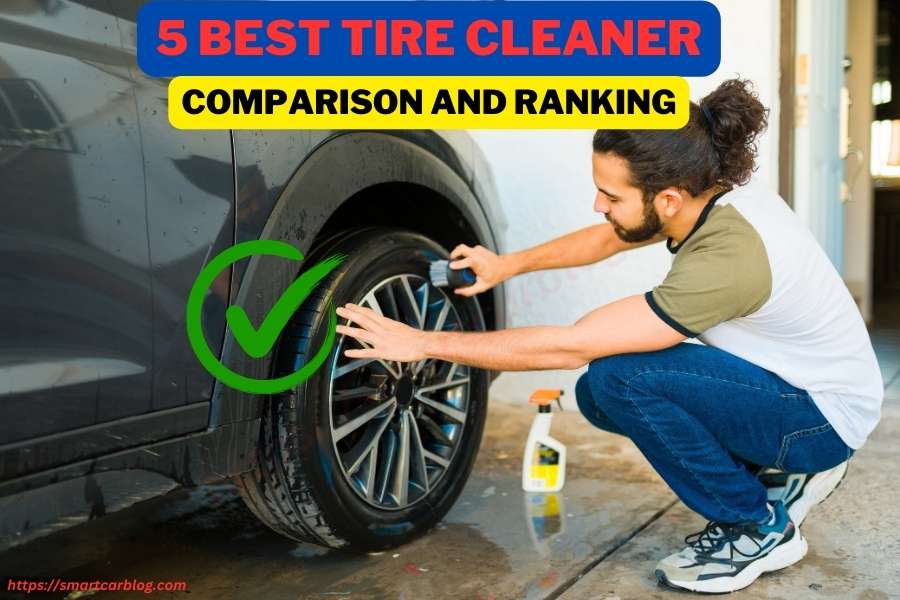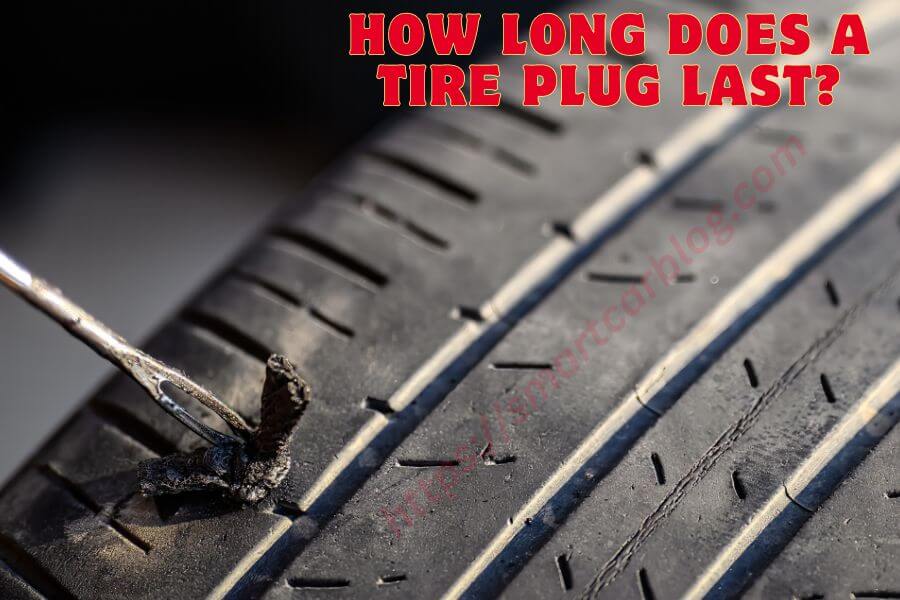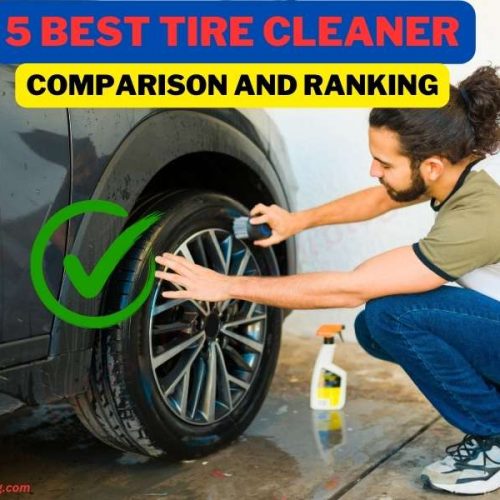When it comes to unexpected flat tires, a tire plug can be a lifesaver, allowing you to get back on the road swiftly. But a common question looms large: how long does a tire plug last? Understanding the durability and limitations of a tire plug is vital for every driver.
In this comprehensive exploration, we will guide you into the factors that influence the lifespan of a tire plug, the signs indicating its effectiveness, and the alternatives available for a more permanent solution. Whether you’re facing a punctured tire or just curious about tire maintenance, this guide will provide valuable insights into the longevity of this ingenious fix. Let’s enjoy this journey to unravel the mysteries behind how long a tire plug truly lasts.
Table of Contents
ToggleWhat is a Tire Plug?
Tire plugs are ingenious devices designed to provide a swift and efficient solution to punctured tires. Made from durable materials like rubber, these plugs are inserted directly into the puncture, creating a temporary seal that prevents air leakage. Think of them as instant first aid for your tire, especially when you’ve run over a nail, screw, or any sharp object on the road.
Purpose and Functionality of Tire Plugs
The primary purpose of tire plugs is to offer a quick fix for minor punctures, allowing you to continue your journey without the inconvenience of changing the entire tire. When your tire gets punctured, the plug is inserted into the hole, effectively sealing it and ensuring the air stays inside. This temporary solution buys you time until you can arrange for a more permanent repair or replacement. Tire plugs are your reliable companions during roadside emergencies, ensuring you’re back on your way in no time.
With these basics in mind, let’s further explore the factors influencing the lifespan of tire plugs and discover how to make the most out of this ingenious invention.
Factors Influencing The Lifespan of a Tire Plug
Tire plugs are handy solutions, but various factors can influence their effectiveness. Let’s explore the key elements that determine how long a tire plug lasts and how to make the most out of this temporary fix.
Quality of the Tire Plug
The quality of the tire plug itself significantly impacts its longevity. Opting for high-quality plugs made from durable materials ensures a stronger and more reliable seal. These plugs are designed to withstand various road conditions and offer a more extended temporary solution for your punctured tire. Choosing trusted brands and quality materials can make a substantial difference in the lifespan of your tire plug.
Professional Installation vs DIY
The method of installation plays a crucial role in how long a tire plug lasts. Professional installation by certified technicians guarantees precise and effective placement of the plug. Their expertise ensures that the plug is securely inserted, maximising its lifespan. While DIY kits are available, they may sometimes provide a different level of accuracy, potentially affecting the longevity of the repair.
Size and Location of The Puncture
The size and location of the puncture greatly influence the effectiveness of a tire plug. Smaller punctures, especially those located in the tread area, are generally easier to seal with a tire plug. Larger punctures or those near the sidewall might be more challenging to fix and may not hold as long. It’s essential to assess the damage accurately, as this determines whether a tire plug is a suitable solution.
Driving Conditions and Habits
Your driving conditions and habits can impact how long a tire plug lasts. Frequent driving on rough terrains or in extreme weather conditions can put additional stress on the plugged tire. Similarly, aggressive driving habits, such as sudden stops or sharp turns, can strain the repaired area. Being mindful of your driving habits and adjusting them can contribute to prolonging the life of a tire plug.
How Long Does a Tire Plug Last: The General Rule
Understanding the lifespan of a tire plug is essential for every vehicle owner. Let’s explore the general rule when it comes to the longevity of tire plugs and the factors that influence their effectiveness.
Lifespan of a Professionally Installed Tire Plug
Professionally installed tire plugs tend to have a longer lifespan compared to DIY attempts. Certified technicians ensure the plug is inserted securely and accurately, maximizing its effectiveness. Professionally installed plugs, when done under optimal conditions, can last for a considerable amount of time, providing a reliable temporary solution until a proper tire repair or replacement is arranged.
Lifespan of a DIY Tire Plug
DIY tire plugs, while convenient, might have a slightly shorter lifespan compared to professionally installed ones. The effectiveness of a DIY plug depends on the precision of the application and the quality of the plug used. With careful application and attention to detail, a DIY plug can last long enough to get you to a repair facility. Still, it’s crucial to consider it a temporary fix and not a permanent solution.
Exceptions to the Rule
There are exceptions to the general rule of tire plug longevity. Certain factors, such as the size and location of the puncture, the quality of the tire and plug, and driving conditions, can impact the lifespan of a tire plug. Larger punctures or those close to the sidewall might not hold as long, and extreme driving conditions can put additional stress on the repaired area. It’s essential to be aware of these exceptions and monitor your plugged tire vigilantly.
Understanding the differences in lifespan between professionally installed and DIY tire plugs, as well as the exceptions to the rule, empowers vehicle owners to make informed decisions when faced with a punctured tire. Let’s continue exploring more nuances to help you navigate the world of tire maintenance effectively.]
The Science Behind Tire Plug Longevity
Understanding the scientific aspects of tire plugs is crucial in comprehending how long they last and their effectiveness. Let’s explore the intricate details that determine the longevity of tire plugs and how their composition plays a vital role in tire maintenance.
Material Composition of Tire Plugs
Tire plugs are meticulously designed using specific materials to ensure durability and effectiveness. These plugs are commonly crafted from high-quality rubber or similar resilient materials, chosen for their flexibility and resistance to wear and tear. The material composition allows the plug to conform to the shape of the puncture, creating a tight seal that prevents air from escaping. Moreover, these materials are selected to withstand varying temperatures and road conditions, ensuring the plug remains intact and functional over time.
The Role of Adhesives in Tire Plug Durability
In addition to the material composition, adhesives play a significant role in tire plug durability. Specialized adhesives enhance the bond between the plug and the tire, reinforcing the seal and ensuring it remains intact during regular driving conditions. These adhesives are engineered to provide a strong and long-lasting connection, allowing the tire plug to withstand the pressure and stresses experienced while driving. The synergy between the material composition of the plug and the adhesive used is the key to its durability, ensuring the plug can effectively seal punctures for an extended period.
Understanding the scientific intricacies behind tire plug longevity sheds light on why these small devices are so effective in handling punctures. The careful selection of materials and adhesives demonstrates the meticulous engineering that goes into creating reliable solutions for unexpected flat tires. Let’s drive further into the world of tire plugs to uncover more about their installation, maintenance, and real-world applications.
Signs Your Tire Plug is Failing
Understanding the signs of a failing tire plug is crucial to ensuring your safety on the road. Let’s explore the indicators that your tire plug might be losing its effectiveness and needs attention.
Visible Wear and Tear on the Plug
One of the most apparent signs that your tire plug is failing is visible wear and tear on the plug itself. Inspect the area around the plug regularly. If you notice cracks, splits, or any other forms of damage on the plug, it indicates that the seal might be weakening. Over time, exposure to the elements and constant pressure can cause the plug to deteriorate, compromising its ability to keep the tire properly sealed.
Frequent Air Pressure Loss
A sudden decrease in tire pressure serves as a clear signal that your tire plug could be failing. If you often find yourself needing to inflate your tire, it’s an indication that the plug isn’t maintaining the seal effectively. Tire plugs in good condition should uphold tire pressure consistently. Repeated loss of air pressure suggests that the plug may have shifted or the seal has been compromised, allowing air to leak. In such cases, immediate inspection is necessary, along with considering the possibility of reinstalling the plug. If you also receive a ‘service tire monitor system (STMS)‘ warning, addressing the issue promptly is essential to ensure your vehicle’s safety and proper functioning.
Unusual Tire Performance
Pay attention to any unusual behavior in your tire’s performance. If you experience vibrations, wobbling, or a change in the handling of your vehicle, it could be a result of a failing tire plug. When the plug loses its integrity, it affects the balance and stability of the tire, leading to these issues. Addressing these performance changes promptly is essential to prevent further damage to the tire and ensure your safety while driving.
Recognizing these signs can help you take proactive measures to address a failing tire plug promptly. Regular inspections and attentive driving can make a significant difference in maintaining the effectiveness of the plug, ensuring you have a safe and smooth driving experience. Let’s continue exploring more aspects of tire plugs to equip you with the knowledge needed to handle unexpected flat tires effectively.
Must Read: How Much Are Used Tire?
Alternatives to Tire Plugs
While tire plugs are convenient solutions for minor punctures, there are alternative methods to address tire damage effectively. Let’s explore these alternatives and understand the situations where they are the most suitable options.
Tire Patching: An Overview
Tire patching is a reliable alternative to tire plugs, especially for larger punctures or damages that plugs cannot handle. A tire patch involves applying a patch to the inner liner of the tire, covering the punctured area completely. This method provides a robust and long-lasting solution, preventing air from leaking and ensuring the tire’s structural integrity. Tire patches are particularly effective for punctures that are too large for plugs or located in areas where plugs might not create a secure seal. Professional technicians use specialized equipment and adhesives to ensure a secure patch, making it a durable option for repairing tires.
Tire Replacement: When It’s Necessary
In some cases, tire damage is beyond repair, making tire replacement the only viable option. Irreparable damages such as sidewall punctures, extensive tread wear, or blowouts often necessitate replacing the entire tire. Additionally, if your tires are old and have worn out significantly, it’s advisable to replace them for safety reasons, even if there are no visible damages. Regularly inspecting your tires for signs of wear and damage is essential in determining when replacement is necessary, ensuring your vehicle’s safety and optimal performance.
Comparing Tire Plugs, Patches, and Replacement
Comparing tire plugs, patches, and replacements is crucial to making an informed decision based on the type and extent of tire damage. Tire plugs offer quick and temporary solutions for minor punctures and are suitable for emergencies. Patches provide a more permanent fix for larger punctures, ensuring durability and long-lasting results. Tire replacements are the ultimate solution for irreparable damages and worn-out tires, guaranteeing safety and performance. Considering the nature of the damage, your driving habits, and the overall condition of your tires will help you choose the most appropriate method for your specific situation.
Understanding these alternatives equips you with the knowledge to make the best decision when faced with tire damage, ensuring your safety and the longevity of your vehicle’s tires. Let’s continue exploring more aspects of tire maintenance to enhance your understanding further.
Maintaining Your Plugged Tire for Maximum Lifespan
Ensuring the longevity of a plugged tire goes beyond the initial repair. Proper maintenance and cautious driving habits are essential to maximize the lifespan of your repaired tire. Let’s explore the steps you can take to maintain your plugged tire effectively.
Regular Tire Checks and Maintenance
Regular tire checks are the cornerstone of maintaining a plugged tire. Inspect your tire regularly for any signs of wear, damage, or loss of pressure. Keep an eye out for changes in tread depth, visible cracks, or bulges, as these could indicate potential issues. Additionally, maintain the recommended tire pressure to prevent overloading the repaired area. Regular maintenance, including rotation and balancing, ensures even wear, prolonging the life of your plugged tire.
Safe Driving Tips for Plugged Tires
Safe driving practices significantly impact the lifespan of a plugged tire. Avoid abrupt stops, sharp turns, and high-speed driving, especially on rough terrains. These actions put additional stress on the repaired area and can compromise the plug’s effectiveness. Maintaining a steady speed and avoiding sudden maneuvers reduces strain on the plugged tire, allowing it to function optimally. Also, be cautious of potholes and debris on the road, as they can cause further damage to your tire.
When to Seek Professional Help
While vigilant maintenance and careful driving can extend the life of your plugged tire, there are situations where professional intervention is necessary. If you notice any unusual vibrations, persistent loss of pressure, or visible signs of damage, seek professional assistance immediately. These symptoms might indicate a failing plug or other tire-related issues that require expert inspection. Professional technicians can assess the condition of your tire, determining whether a repair, patch, or replacement is necessary. Prompt, professional help ensures your safety and prevents further damage to your vehicle.
By following these guidelines, you can maintain your plugged tire effectively, enhancing its lifespan and ensuring your safety on the road. Regular checks, safe driving habits, and timely professional assistance are key to maximizing the longevity of your repaired tire. Let’s continue exploring more aspects of tire maintenance to equip you with the knowledge needed to handle unexpected flat tires and ensure the optimal performance of your vehicle.
Wrapping up
In conclusion, the lifespan of a tire plug depends on various factors, including its quality, the precision of installation, the size and location of the puncture, and your driving habits. A well-installed tire plug, whether done professionally or as a DIY solution, can provide a reliable temporary fix, allowing you to continue your journey until a more permanent repair or replacement can be arranged.
Regular maintenance and safe driving practices play a significant role in prolonging the life of a plugged tire. Conducting regular tire checks, maintaining proper tire pressure, and driving cautiously can prevent additional stress on the repaired area, ensuring the plug remains effective for an extended period.
However, it’s essential to be vigilant for signs of wear and tear, such as visible damage to the plug, frequent air pressure loss, or unusual tire performance. These signs indicate a failing plug and require immediate attention. In such cases, seeking professional help is crucial to assess the situation accurately and determine the appropriate course of action, whether it’s a repair, patch, or tire replacement.
By understanding the factors influencing tire plug longevity and practicing proactive maintenance, you can make the most out of this convenient solution for minor punctures. Remember that while tire plugs offer a practical temporary fix, they are not a substitute for professional repairs or replacements when the damage is extensive.
In your tire maintenance journey, knowledge, vigilance, and timely action are your best allies. Stay informed, drive responsibly, and address tire issues promptly to ensure the safety and efficiency of your vehicle on the road.
FAQ
Q: Can I drive long distances with a plugged tire?
A: While it’s possible to drive short distances with a plugged tire, long-distance travel is not recommended. Extended journeys can exert pressure on the plug, potentially compromising its effectiveness. It’s best to consider a permanent repair or replacement before embarking on a lengthy trip for your safety and the tire’s longevity.
Q: Is a tire plug permanent?
A: Tire plugs are not considered permanent solutions. They offer a temporary fix for minor punctures, allowing you to drive to a repair facility. However, a professional patch or tire replacement is necessary for a permanent, safe solution. Plugs are designed as interim measures and should be addressed promptly for long-term safety.
Q: Can a tire plug fall out?
A: While it’s rare, a tire plug can potentially fall out if not installed correctly or if the puncture is too large. Proper installation by a certified technician reduces this risk significantly. Regular inspections are essential to ensure the plug remains secure. If you notice any signs of instability, seek professional help immediately.
Q: How long does a tire plug take to dry?
A: Tire plugs typically don’t need time to “dry.” Once inserted, they create an immediate seal. However, the effectiveness of the plug isn’t instantaneous; it takes a moment for the plug to expand and create a tight seal. After installation, it’s advisable to wait a few minutes before inflating the tire to the recommended pressure.
Q: How long does a tire plug last (Reddit community insights)?
A: On Reddit, users share varied experiences, suggesting that the lifespan of a tire plug depends on factors such as the puncture size, quality of the plug, and driving conditions. Some users report successful long-term use, while others recommend them as temporary fixes. It’s essential to consider professional advice and Reddit insights as general guidance, tailoring your decision to your specific situation.
Q: can you patch a plugged tire?
A: Patching a plugged tire is generally discouraged. Plugs are temporary solutions, and patching over a plug may not provide a reliable, long-term fix. If you’ve plugged your tire and encountered another puncture, it’s advisable to have the tire professionally patched or replaced for safety and durability.
Q: Tire plug vs patch – which is better?
A: Tire patches are generally considered more reliable for permanent solutions. Patches cover the inside of the tire, ensuring a comprehensive seal. Plugs, on the other hand, are quick fixes suitable for emergencies. While both serve a purpose, if you’re looking for a long-term, dependable repair, a professionally installed tire patch is the better choice for ensuring the safety and longevity of your tire.




 Welcome to SmartCarBlog.com! I’m Rashel Miajee, The proud founder of smartcarblog.com. This is a part of
Welcome to SmartCarBlog.com! I’m Rashel Miajee, The proud founder of smartcarblog.com. This is a part of 


